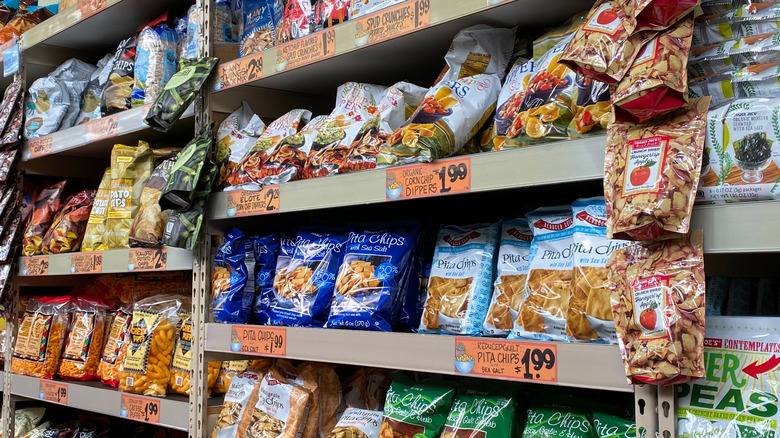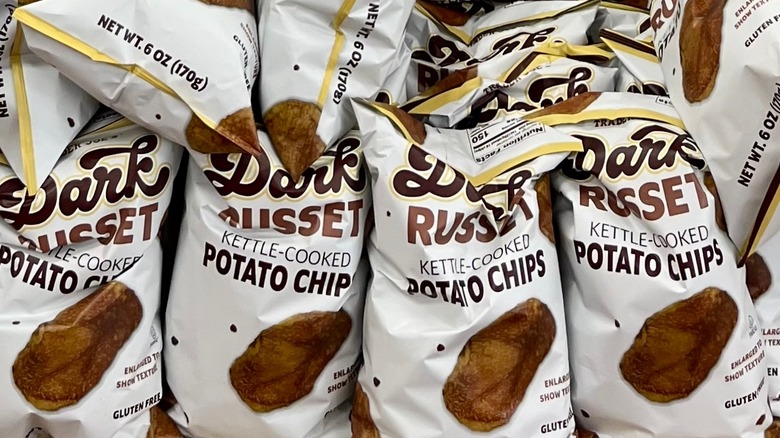Our Favorite Trader Joe's Chips Are The Perfect Balance Of Flavor And Crunch
With so many different salty snacks available at Trader Joe's, it seems nearly impossible to pick a favorite. It was a daunting task, but after taste testing 19 different Trader Joe's chips, one reigned supreme: Trader Joe's Dark Russet Potato Chips. These chips have that irresistible crunch that only kettle-cooked chips can have. As for flavor, there are no fancy spice mixes or complicated ingredients involved. The distinctly earthy and robust taste comes from the fact that the chips are made using russet potatoes specifically. Combine these two aspects with a dash of salt, and the result is a unique yet satisfying snack.
Like some of the best Trader Joe's snacks, these dark russet chips have sadly become an anomaly in stores. Depending on what state you live in, the nearest Trader Joe's might be fully stocked on these chips, or there might not be a Trader Joe's store at all. The chips have become harder to find since its supplier, Covered Bridge Potato Chips, suffered a building fire, which has affected the production of multiple Trader Joe's chips.
What makes dark russet chips different
Russet potatoes are not commonly used for chips, making the product itself a rare find. Additionally, these chips are made using a specific style with a strong emphasis on the fact that these chips are simply darker and richer rather than burnt or overcooked, which is often the assumption. Chips made in a darker style are are naturally caramelized — the sugars found in russet potatoes undergo a transformation when exposed to heat. Over time, this transformation changes the taste and even the smell of the potato. This gives the chips a golden brown color, a crunchier texture, and a richer taste, much like caramelizing sugar on crème brûlée gives it more color and flavor.
This process is known as the Maillard reaction. Despite the fact that this process is quite similar to caramelization, it is not the same. The key difference is that caramelization happens at a higher temperature, typically 300 degrees Fahrenheit or more, while the Maillard reaction typically happens between 285-300 degrees Fahrenheit. This reaction can happen while making all kinds of foods, like steak or bread, and is being applied to making potato chips in this case.

